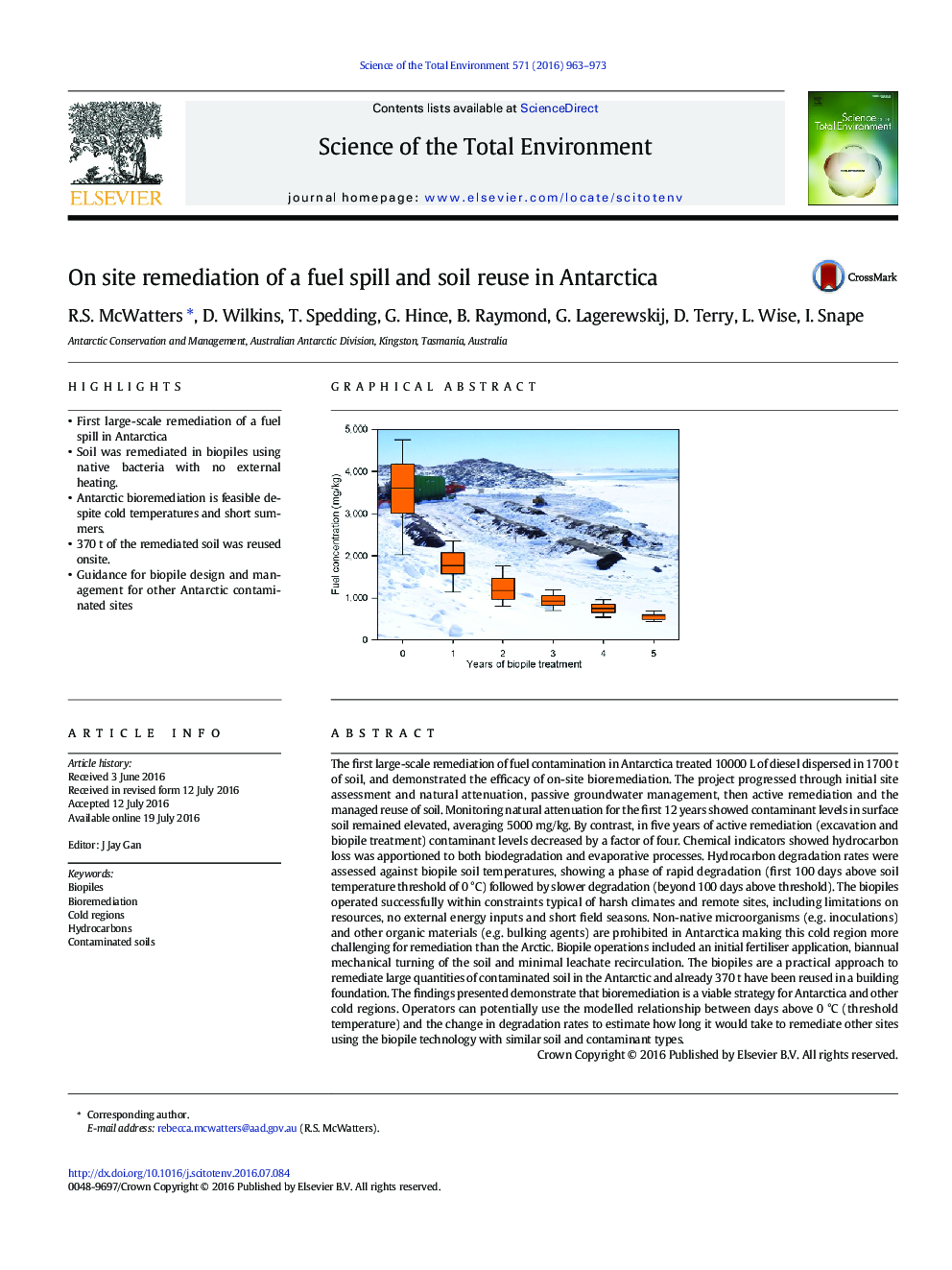| کد مقاله | کد نشریه | سال انتشار | مقاله انگلیسی | نسخه تمام متن |
|---|---|---|---|---|
| 6320565 | 1619720 | 2016 | 11 صفحه PDF | دانلود رایگان |
- First large-scale remediation of a fuel spill in Antarctica
- Soil was remediated in biopiles using native bacteria with no external heating.
- Antarctic bioremediation is feasible despite cold temperatures and short summers.
- 370Â t of the remediated soil was reused onsite.
- Guidance for biopile design and management for other Antarctic contaminated sites
The first large-scale remediation of fuel contamination in Antarctica treated 10000 L of diesel dispersed in 1700 t of soil, and demonstrated the efficacy of on-site bioremediation. The project progressed through initial site assessment and natural attenuation, passive groundwater management, then active remediation and the managed reuse of soil. Monitoring natural attenuation for the first 12 years showed contaminant levels in surface soil remained elevated, averaging 5000 mg/kg. By contrast, in five years of active remediation (excavation and biopile treatment) contaminant levels decreased by a factor of four. Chemical indicators showed hydrocarbon loss was apportioned to both biodegradation and evaporative processes. Hydrocarbon degradation rates were assessed against biopile soil temperatures, showing a phase of rapid degradation (first 100 days above soil temperature threshold of 0 °C) followed by slower degradation (beyond 100 days above threshold). The biopiles operated successfully within constraints typical of harsh climates and remote sites, including limitations on resources, no external energy inputs and short field seasons. Non-native microorganisms (e.g. inoculations) and other organic materials (e.g. bulking agents) are prohibited in Antarctica making this cold region more challenging for remediation than the Arctic. Biopile operations included an initial fertiliser application, biannual mechanical turning of the soil and minimal leachate recirculation. The biopiles are a practical approach to remediate large quantities of contaminated soil in the Antarctic and already 370 t have been reused in a building foundation. The findings presented demonstrate that bioremediation is a viable strategy for Antarctica and other cold regions. Operators can potentially use the modelled relationship between days above 0 °C (threshold temperature) and the change in degradation rates to estimate how long it would take to remediate other sites using the biopile technology with similar soil and contaminant types.
117
Journal: Science of The Total Environment - Volume 571, 15 November 2016, Pages 963-973
